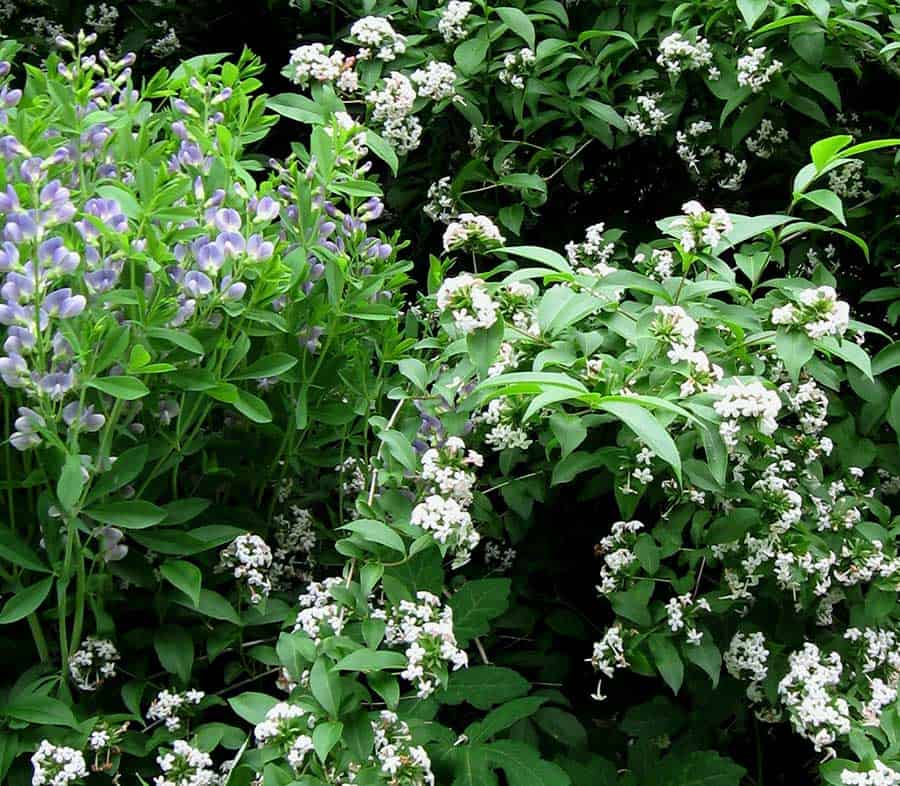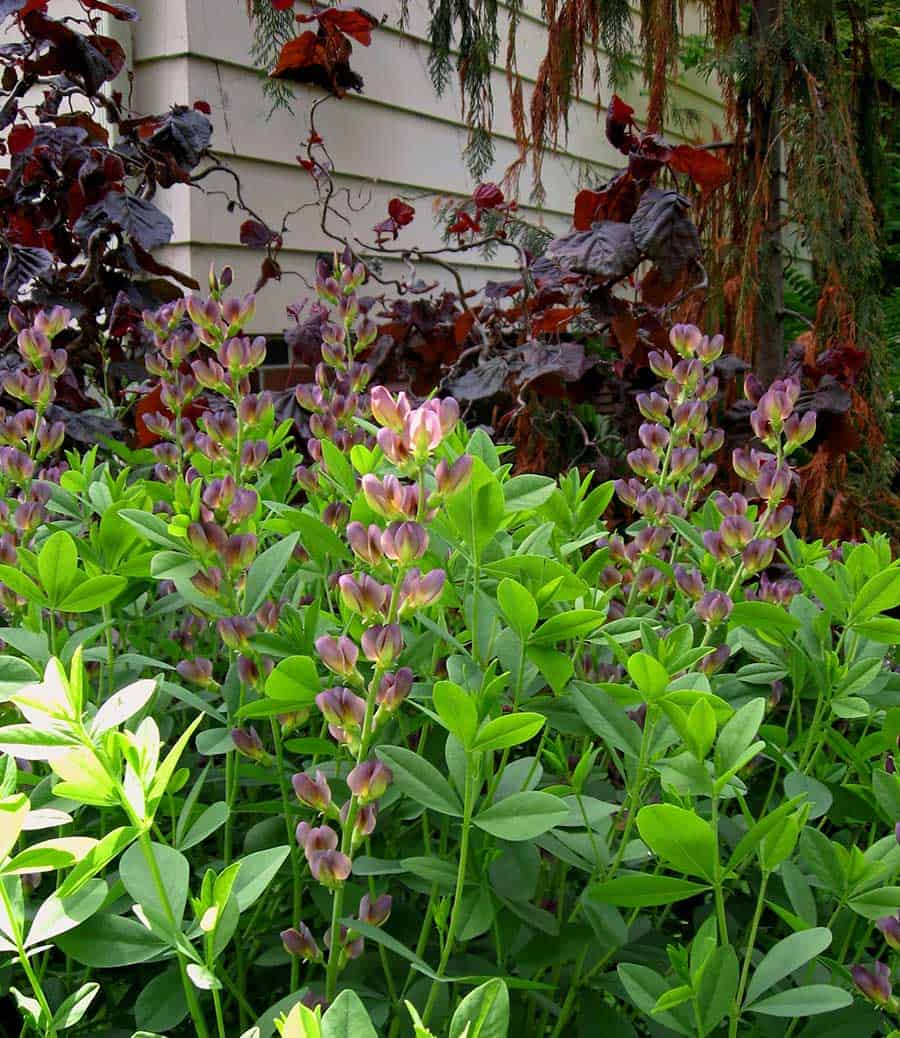
I purchased my first blue false indigo (Baptisia australis) in 1990. At the time, it was considered a rare plant and was the only species in its genus that could be found at specialty nurseries. But within 20 years a number of excellent hybrids were released, and Baptisia australis achieved mainstream status when the Perennial Plant Association named it their Perennial of the Year for 2010.
The Baptisia genus comprises about 15 species, and although they’re often referred to as native plants, the only species that’s indigenous to Canada — and only to Ontario — is the unfortunately named horsefly weed (B. tinctoria). Nevertheless, the humble horsefly weed has proved an able parent when fertilized with the pollen of white wild indigo (B. alba), and is mother to several lovely cultivars, such as the Prairieblues series selections ‘Midnight’ and ‘Solar Flare’.
Most Baptisia species are native to the eastern half of the U.S. although B. australis has become naturalized in Ontario. The old common name blue false indigo refers to the plant’s use in the southern states as a substitute for genuine Asian dyer’s indigo (Indigofera tinctoria) during the 18th century. These days, it’s usually (and more appropriately) referred to as blue “wild” indigo. Many gardeners assume that blue-flowered baptisias are the most common types, but yellow and white blooms dominate in the wild.
Baptisias bloom in early summer on large, impressive spikes (racemes) and taken individually, their flowers look similar to their near relations: lupins and sweet peas. And like all members of the Fabaceae family, baptisias fix atmospheric nitrogen through nodules on their roots, improving soil fertility as they grow.
Baptisia species and cultivars should be sited in full sun in average to rich garden loam. Their deep, extensive root systems make them highly drought tolerant, but also render them difficult to move or divide. My best advice is to choose your site carefully and then leave them alone — in the wild, individual clumps often live for 65 years or more. Virtually disease- and pest-free, many baptisias grow five feet (1.5 m) tall with an almost equal spread, and in the home garden they read more like shrubs than perennials, so allow them plenty of elbow room.

Prairieblues series
In addition to my original Baptisia australis (Zone 3), I also grow several cultivars from the Prairieblues series that were bred by Dr. James Ault at the Chicago Botanic Garden. These hybrids are hardy to Zone 4, and like dear old B. australis, they attract bees, butterflies and hummingbirds and are deer and rabbit resistant.
‘Twilite’ (B. ×variicolor) is a cross between B. australis and yellow wild indigo (B. sphaerocarpa) that grows five feet (1.5 m) tall by three feet (90 cm) wide. Introduced in 2008, hybridizer Ault calls it a “baptisia on steroids.” I’ve paired my ‘Twilite’ with a purple-leaved form of corkscrew hazel (Corylus avellana ‘Contorta’).
The following year, Ault introduced ‘Starlite’ (B. ×bicolor), a cross between B. australis and long-bract wild indigo (B. bracteata). ‘Starlite’ grows 40 inches (1 m) tall and wide and bears bicoloured baby blue and lavender flowers with pale yellow keels. I grow mine beside a super-fragrant Korean abelia (Abelia mosanensis, Zone 4) that flowers at the same time.
Share your comments
Do you grow Baptisia species or cultivars in your Canada 150 garden?



I wanted to see the tomato article too and I still can’t get there.
The pruning article is on the Garden Making site. The link is https://gardenmaking.com/pruning-tomatoes/
I was hoping to see the article on pruning tomatoes but this site appeared instead. Can you lead me to the article about the tomatoes instead please.
The link has been corrected.
Baptista one of the many plants that I love. Like you I bought my first one many yrs ago. I found it Wild Things in Ontario quite by accident. I now have Solar Flare, which you’re right is more of a shrub, and Pixie Periwinkle, it new so I expect I’ll have flowers next summer. I enjoy reading your columns and the love you have for the plants you describe. I watched your show was it called “Flower Power”, maybe it was something else? Anyways, I loved your enthusiasm for all the plants and learned many interesting and valuable things. I hope this column will continue what your TV show started for a very long time. Thanks for sharing your knowledge and love.